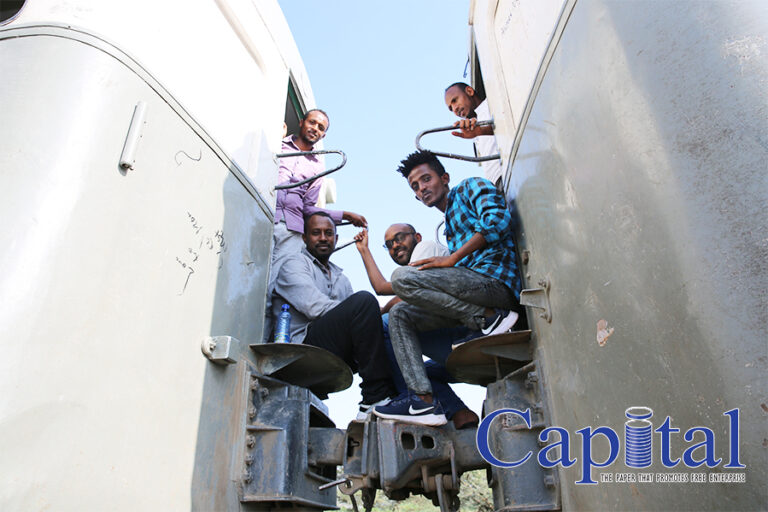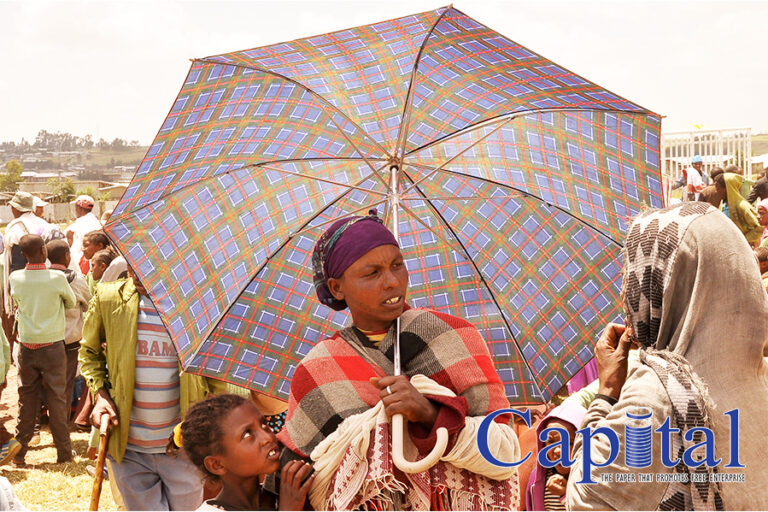The electoral race: Enat Party
Elections in their true nature keep a democratic country functioning, as they give the people the right to select their own government. Choosing the right leadership is integral to the success and growth of any given country. With the 6th Ethiopian general elections fast approaching, Capital has organized a series of interviews with aspiring political parties, with topics that encompass their incoming policy plans with regards to important matters that are required for the progress of Ethiopia.
To this end, Capital drew links with Enat Party, through their acting President, Seife-Selassie Ayalew (PhD). The following are the party’s subsequent plans with respect to the key stone areas that require dire attention for a better Ethiopia. Excerpts;
Capital: What kind of policy plans does Enat party have towards developing education in Ethiopia?
Seife-Selassie Ayalew: For the past 30 years the education system of the country has been from the pan to the fire, which was damaged desperately. Despite the number of schools and education institutions increasing the quality of education has deteriorated. The promised works of increasing number of teachers, fulfilling equipment’s was forgotten and universities have been popping given the platform to become higher institutions without fulfilling the requirement set to qualify as higher education institution which downgrades the education system. Thus when students graduate they do not meet the needs of the demanding working world of this day and age.
To this respect, we are eager to create a quality education system which will go a long way in creating efficient and competent citizens starting from elementary to secondary school and we will build higher education institutions with quality education beyond just increasing the number.

The current education system of the country is totally copied from the western system, which forgets or neglects the local knowledge. Since our party follows a conservative social democracy system we will give great space for local culture, history and social system to be included in the education system.
Capital: What kind of policy does Enat Party have regarding job creation and minimizing unemployment rate?
Seife-Selassie Ayalew: Unemployment is a big challenge in the country, it is difficult for citizens to get job after graduation, which is resulting to social crisis but the bigger question still remains, how are we going to solve the problem?
It is difficult for government to give job for all of its citizens, however by creating conducive environment for private actors both local and foreigners those who can create more jobs in the country, the problem could be solved, such as supporting investments, funds and so on based on their business ideas.
Only allocating billions of revolving fund will result to waste unless we work in tandem with the private sector to be the engine of the economy.
Capital: What kind of policy framework do you have in store to support and improve the agriculture sector?
Seife-Selassie Ayalew: The agriculture sector is spoiled badly, even if about 80 percent of the population is dependent on agriculture sector, most of the farmers own small plots of land which is not convenient for modern and mechanized farming as well as for productivity. And also from that small land it will also be scattered for the family, which highlights the gravity of the situation.
For the last two or three decades there was high drought in the country, which was stressing the sector, and the country was receiving aid from others. Annually there are about 6 up to 7 million people in Ethiopia who need food aid which raises the question of is their sufficient supply of food for the long term sustainability?
The country has considerable wealth from its natural resources, but because of wrong policy surrounding the sector, it has been deadly damaged.
Enat Party has two measure extents to support the agriculture sector, the first is land reform. In terms of land reform Enat plans to make reform on land ownership which is from the government to the private sector, which needs constitutional reform. There will be three division of ownership, private, contract and governmental so this reform will help the farmer to expand its farming land, mechanized its farming system and increase productivity by working efficiently.
And the second measure is we will be using our resources to modernize and develop the sector and increase productivity. By modernizing irrigation systems, we are planning to decrease the agriculture sector which is dependent on rain fails. These could help us to increase productivity to three and four times in a year. As our party believes the question is beyond being food sufficient it is also feeding other since the country has enough resource.
Capital: What kind of policy does Enat Party have regarding decreasing inflation and building sustainable living standards?
Seife-Selassie Ayalew: Inflation in our country is circulation which needs to be controlled, as Enat party we are planning to take some listed measures such as Tax measures. We are planning to remove sure tax which is imposed on imported items which can have impact on the economy, The other measure is removing value added tax on basic commodities including food and cloths which can have some impact on improving living standard and creating a conducive environment for consumers.
The other measure will be giving additional salary for citizens; there will be 13 months of salary,
Income tax will be revised to increase disposable income of citizens which will be significant in terms of increasing income.
Capital: How will Enat Party tackle the foreign currency crunch that has proven to be a challenge for the country?
Seife-selassie Ayalew: There are two basic things we need to understand, the first is we need to generate foreign currency and the other is how; how are we going to increase our capacity to generate, the industry sector which should be leading to generate foreign currency.
So as an immediate solution we will fully apply Franco-Valuta to ease the surging cost of living in the country which currently the government announced that basic goods importers would be allowed to use.
This would help bridge the gap between the supply and demand of goods. The gap is blamed for the ever-increasing inflation; anyone who can get foreign currency can import items without any limitation.
The other measure is controlling the distribution of foreign currency, making it in the legal line.
Capital: What is the general economic policy of Enat Party?
Seife-selassie Ayalew: We plan to make the industry sector the lead to the economic development. We will; increase export in order to help generate foreign currency, create a participatory economic system, and be giving conducive environment for the private sector.






